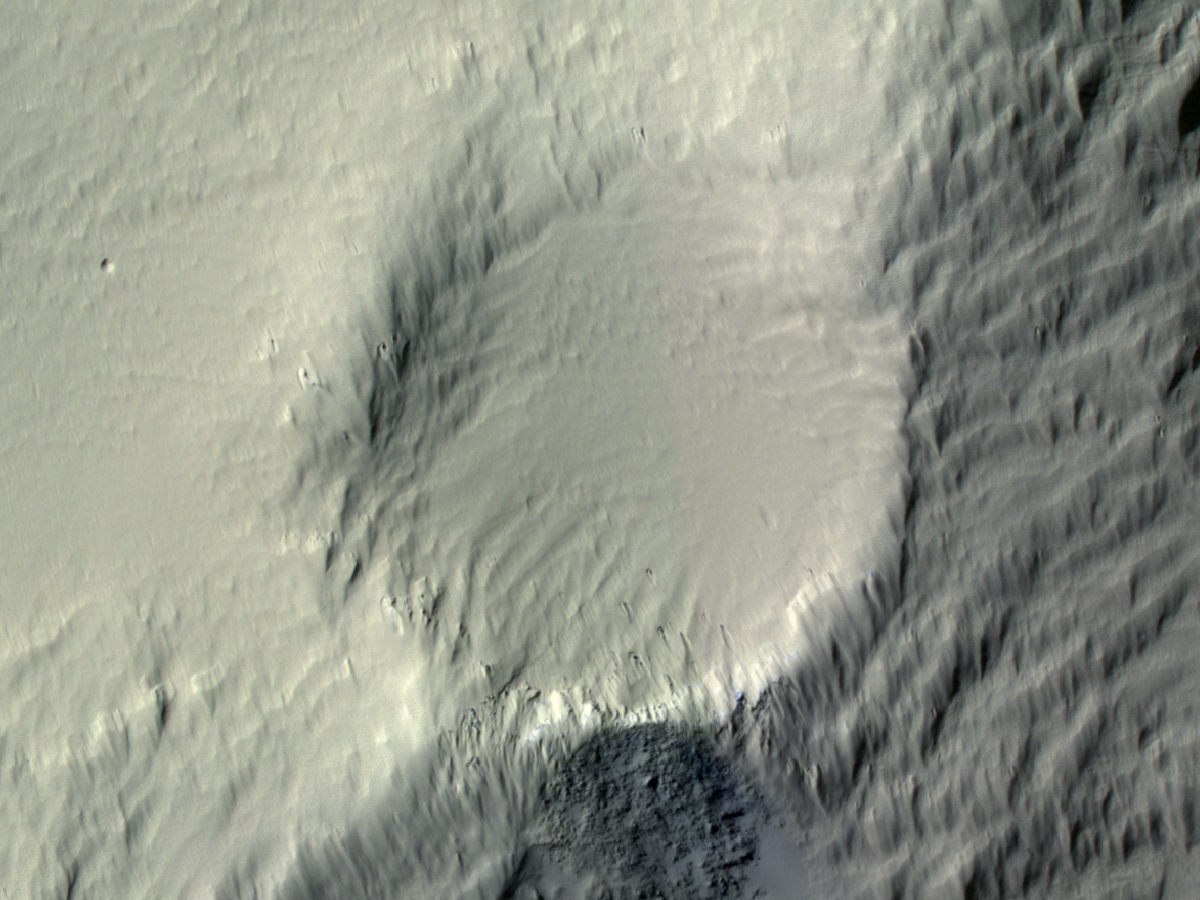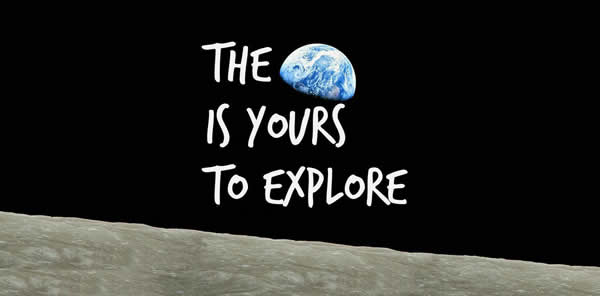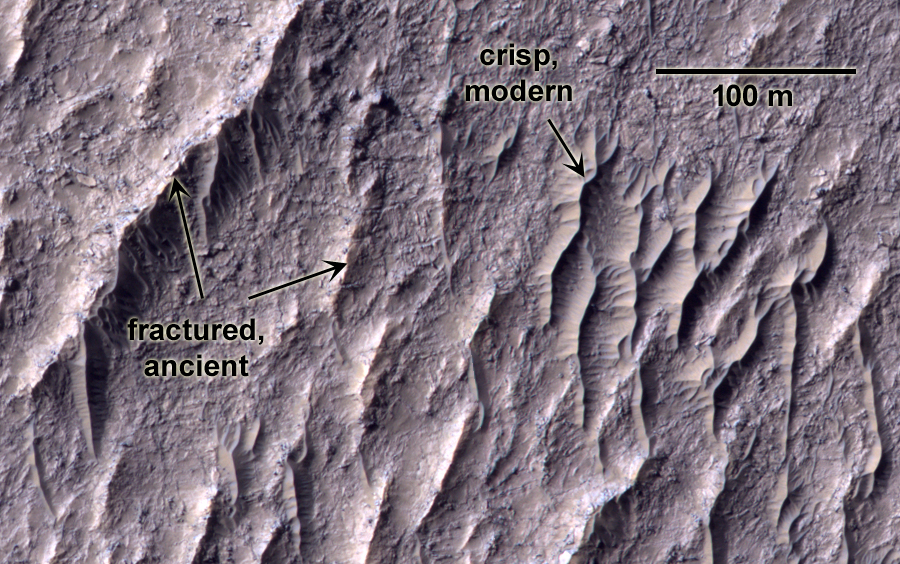The wind giveth and the wind taketh away

Big ripples near Opportunity
April 28, 2014
How we know wind blows down Olympus Mons’ flanks
May 12, 2014 A piece of Mars: In the center of this image is a 270 m crater (885 ft) that was nearly buried, along with the surrounding terrain, by dust. Since then, wind from the upper left has scoured the dust deposit, forming streamlined horse-tail shapes. A few meter-scale boulders, possibly flung in from nearby impacts, show the most recent streamlined erosion. (ESP_035994_1805, NASA/JPL/Univ. of Arizona)
A piece of Mars: In the center of this image is a 270 m crater (885 ft) that was nearly buried, along with the surrounding terrain, by dust. Since then, wind from the upper left has scoured the dust deposit, forming streamlined horse-tail shapes. A few meter-scale boulders, possibly flung in from nearby impacts, show the most recent streamlined erosion. (ESP_035994_1805, NASA/JPL/Univ. of Arizona)




3 Comments
Hi, Awesome image! 2 questions please
A. Wondering if there’s an image of this crater prior to being filled with dust and sand debris, so we could compare the two?
B. What is your guesstimate on time to completely fill the crater?
I ask question (B) because i was unlucky enough to be caught in a Ha boob (sand storm) outside of Phoenix, Az. in the summer 2012 it was amazing how much sand filled the sky
Hi William!
A. Nope, there’s no image of this area before the dust covered it. That’s likely to have happened a long time ago (millions of years or more). But it would be nice to compare the crater before and after it was filled, I agree.
B. The timescale required could vary quite a bit. It comes down to two processes: 1) how quickly did dust fall down on the surface? and 2) how quickly is it being eroded away? Those aren’t easy questions to answer on a world where we can’t just go and plunk down the instruments needed to make those measurements (or rather, the two spacecraft able to make those measurements are located far away from this spot). So instead we do some hand waving. I don’t see a lot of fresh craters on top of this dusty deposit, which means that either 1) the dust is accumulating faster than craters form, 2) any craters that do form get eroded away as the dust is eroded, or 3) both. However, there are some boulders sitting here, and they were probably flung there from an impact not so far away (tens to hundreds of kilometers). The dust was there before those boulders showed up, so it’s probably been there a while. The boulders have been there long enough to protect some of the dust from eroding (which is why they create those lovely tails of dust behind them). Say the surface erodes at a rate of about 1 micron/year (which is a fairly large rate for Mars, but the surface here seems to be fairly young, and wind scour seems to be the most recent process to have influenced the surface). Say the boulders are on average about 2 m high. When they landed on the surface here, the impact of their falling let them push into the dust maybe 20 cm (the last number is based on vigorous hand waving). Since they landed, wind tails maybe 1 m high have formed in their wake. The boulders haven’t been buried, which suggests that right now, dust erosion is outpacing dust accumulation, so let’s pretend no dust is accumulating now. So if the boulders have protected ~80 cm of dust from being eroded, this would have taken 800,000 years, give or take.
Of course, the dust accumulations behind the boulders might not be erosional remnants, but some kind of bedform construction. And the rate of dust accumulation and erosion may well change with time. The boulders might float on the surface as the dust erodes out from beneath them. And the dust may have sat on the surface for a loooong time before those boulders got flung there from whatever impact sent them to this spot. It’s likely the presence of the boulders both enhances erosion next to the boulders, and enhances dust preservation in their wake. So a proper estimate of timing would involve accounting for these things, some of which we have no way of putting a contraint on. So I’d just go with “probably on the order of millions of years”.
Hi, Dr. Fenton thanks so much for taking time to script such a wonderful and thoughtful reply…even i as a non science person can understand.
Bookmarked your blog!
Looking forward to viewing some neat images and more “hand waving” insights you’ll provide here in the near future.
William